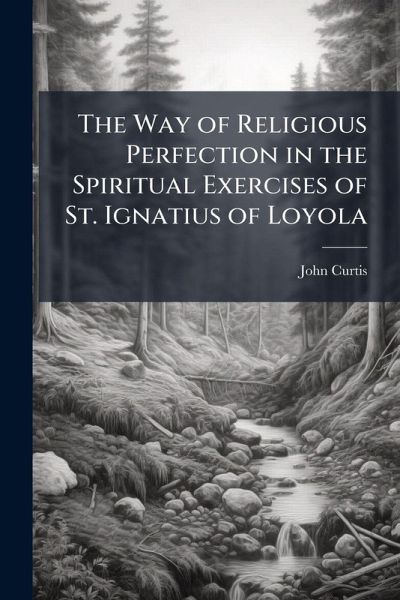
The Way of Religious Perfection in the Spiritual Exercises of St. Ignatius of Loyola
Versandkostenfrei!
Versandfertig in über 4 Wochen
23,99 €
inkl. MwSt.
Weitere Ausgaben:

PAYBACK Punkte
12 °P sammeln!
The Way of Religious Perfection in the Spiritual Exercises of St. Ignatius of Loyola, by John Curtis, offers meditations and lectures designed for an eight- or ten-day retreat tailored for members of religious orders. Originally published in 1882, this work delves into the profound teachings of St. Ignatius, guiding readers along a path toward spiritual growth and deeper understanding of religious life. The book aims to provide practical guidance and reflective exercises to assist individuals in achieving religious perfection, as envisioned through the Ignatian tradition. Curtis expertly prese...
The Way of Religious Perfection in the Spiritual Exercises of St. Ignatius of Loyola, by John Curtis, offers meditations and lectures designed for an eight- or ten-day retreat tailored for members of religious orders. Originally published in 1882, this work delves into the profound teachings of St. Ignatius, guiding readers along a path toward spiritual growth and deeper understanding of religious life. The book aims to provide practical guidance and reflective exercises to assist individuals in achieving religious perfection, as envisioned through the Ignatian tradition. Curtis expertly presents the Spiritual Exercises, making them accessible and applicable to the daily lives of those dedicated to religious service. This enduring guide remains relevant for anyone seeking to enhance their spiritual journey through the wisdom and practices of St. Ignatius of Loyola. It serves as a valuable resource for both personal reflection and communal study within religious communities, offering timeless insights into faith, devotion, and the pursuit of holiness. This work has been selected by scholars as being culturally important, and is part of the knowledge base of civilization as we know it. This work was reproduced from the original artifact, and remains as true to the original work as possible. Therefore, you will see the original copyright references, library stamps (as most of these works have been housed in our most important libraries around the world), and other notations in the work. This work is in the public domain in the United States of America, and possibly other nations. Within the United States, you may freely copy and distribute this work, as no entity (individual or corporate) has a copyright on the body of the work. As a reproduction of a historical artifact, this work may contain missing or blurred pages, poor pictures, errant marks, etc. Scholars believe, and we concur, that this work is important enough to be preserved, reproduced, and made generally available to the public. We appreciate your support of the preservation process, and thank you for being an important part of keeping this knowledge alive and relevant.


